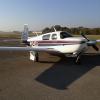Trim Jackscrew Binding
-
Members Online
- Greg Ellis
- Ron McBride
- IvanP
- ericrynehess
- LANCECASPER
- jeff s
- ta2too
- Jack Burson
- Crawfish
- Zippy_Bird
- Stubby
- richardbrochu27
- outermarker
- ElkoRandy20J
- FlyingDude
- 802flyer
- hypertech
- Brandt
- KLRDMD
- wburger1
- lithium366
- larryb
- Fix
- Grumpy
- PT20J
- daytonabch04
- TheSoup
- philiplane
- jlunseth
- Marc_B
- mikey757
- Mellow_Mooney
- Fly Boomer
- 47U
- natdm


Recommended Posts
Join the conversation
You can post now and register later. If you have an account, sign in now to post with your account.